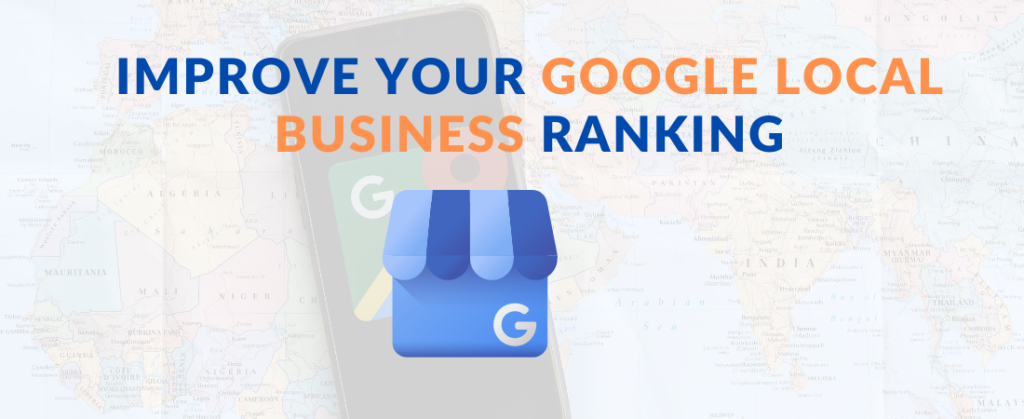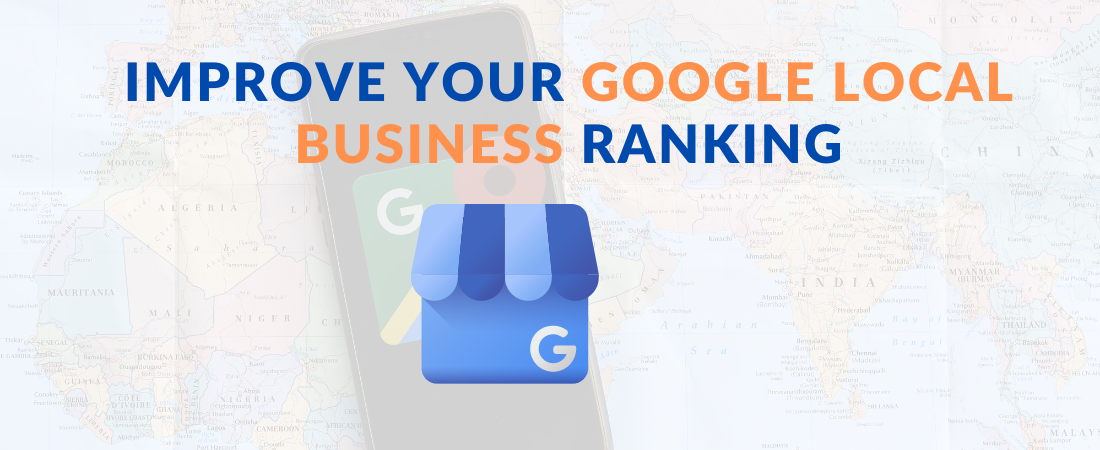Google My Business and Google Maps are vital business marketing tools. They help you find new customers and generate more business by increasing your local visibility, without spending a cent.
However, the benefits of local SEO aren’t automatic!
You can achieve results by taking some local SEO courses, and implementing those techniques, so your listing isn’t just active – but ranked.
Today we’ll look at how to improve Google local business rankings in ten easy steps.

1. Adding Business Listing To Google Maps
It’s obvious that there’s little point in implementing a strategy or comparing local SEO vs. global SEO if you haven’t got any skin in the game.
So, your first task is to make sure you’ve got a Google Maps listing!
Setting up your listing is easy – head to Google Maps on the browser or the app, and search for your business. If you’re there, with a location, bingo!
Otherwise, you can click the option to add a missing business, and add yourself.
2. Claiming A Listing On Google Maps
Next up, you need to claim your listing (this is not the same as just creating one). Anybody can create a listing but they have no ownership over it. To control your Google Maps presence, you need to claim that it’s yours.
You’ll be prompted to:
- Add more details about your company.
- Share rich content in addition to text.
- Update your information if, say, your opening hours change.
To claim a Google Maps listing, you need to have a Google My Business account, so register first if you haven’t already.
3. Expanding On A Basic Google Maps Entry
Once you’ve got your listing and claimed it, you’re ready to optimize and head for better local search results.
The more detailed your listing, the higher it will rank, so try to flesh out your Google My Business account as much as you can:
- Write a business description.
- Use your business name consistently, without abbreviations.
- Make sure the address details match your socials and website exactly.
- Avoid any toll-free contact numbers (they’re associated with spam).
Google local search algorithms will match different digital platforms with each other, so consistency is vital for them to recognize that your listing is the same business as your website.
4. Spicing Up A Google Maps Listing
Text-only listings aren’t great for SEO, and Google looks favorably on businesses that upload images. Partly because that means you’re an active listing and get the bonus of higher rankings, and because Google loves showing images in local search to showcase its photo-recognition technology.
5. Adding Customer Reviews
A clutch of fantastic reviews is a brilliant weapon to add to your arsenal when trying to boost your ranking. Any Google Maps listing is automatically open for reviews, but that’s not usually enough. Being proactive about requesting a review is essential, and you should make a concerted effort to respond, especially if they’re negative!
6. Consolidating Your Presence On Google Maps
Many businesses have several phone numbers or multiple locations, and Google gets annoyed if you have a single company with more than one listing. The best way to approach this is to remove any duplicates and have one overarching listing encompassing all of your branches.
7. The Benefit Of Regular Posts
As with any social media platform, you can choose to create Google Maps posts pinned to the top. These tools are great for announcements like changes to services or holiday closures and serve as a signal to Google that you’re taking steps to manage your listing. The more effort you put into your listing, the more attention you’ll get in the search result rankings – simple.
8. Improving Website Responsiveness
There are also ways to maximize your visibility on Google through your website. Around 60% of Google searches are done through a mobile device, so if your listing takes your customer to a slow website where they need to pinch or zoom to get any information, it will give poor feedback to your Google Maps ranking. Make sure your site is responsive, works on any screen size, and doesn’t have any broken links, then you’ll be good to go.
9. Using Local Targeted Keywords
Another way to add value to your digital presence is to look at targeting local search results through incorporating certain keywords in your content. It’s a win-win since you’ll rank higher in Google and can also improve your listing position. Try:
- Using location-based keywords on landing pages.
- Incorporating location-specific phrases in headings, image tags, and captions.
- Creating separate landing pages for different jurisdictions and lending them all equal weight.
While it’s not a direct influence on your Google Maps listing, doing so reinforces your prominence in the local area, which in turn enhances your visibility.
10. Embed Google Maps On Your Site
Finally, you can embed a Google Map on your site – this is a subtle way to remind Google that you’re authentic and the listing details are correct.
While there’s a lot here to take in, none of the steps to improve your Google local business ranking are particularly technical or laborious.
You get out what you put in, and as business listings on Google Maps become more advanced, you’ll see that better quality information and content provides greater improvements in your businesses search result rankings.
Increased visibility = increased engagement = increased sales, so it’s worth spending a bit of effort to get your Google Maps listing spot on!

